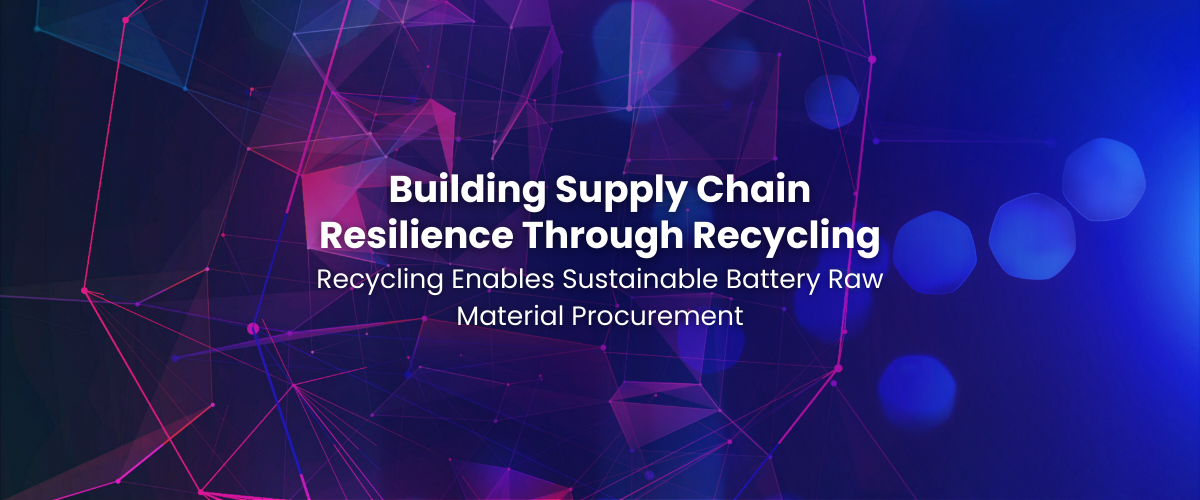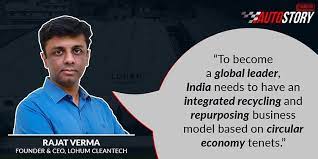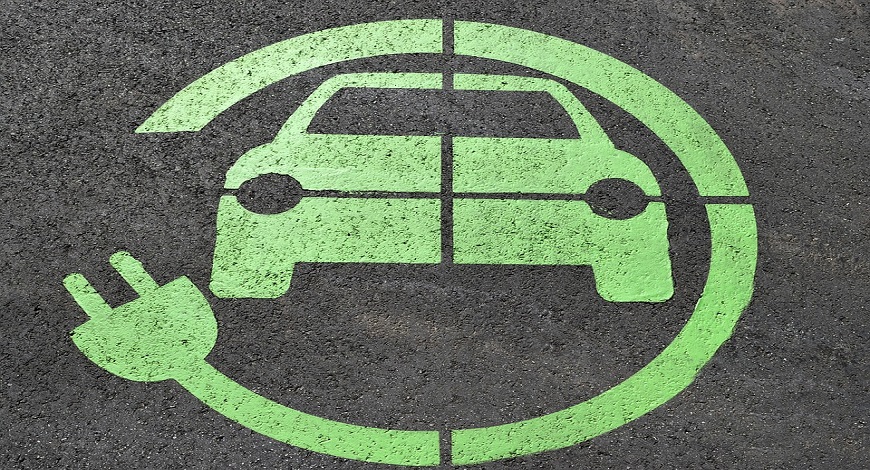
Supply chain resilience is the ability of a supply chain to withstand, recover, and adapt from disruptions, such as natural disasters, geopolitical conflicts, pandemics, or market fluctuations. It is especially critical for the battery industry, which relies on a complex global network of suppliers, manufacturers, and customers to produce and deliver lithium-ion batteries for various applications, such as electric vehicles, consumer electronics, and grid storage.
With limited sources of raw materials for batteries, such as lithium, cobalt, and nickel, a disruption in the supply of any of these materials can cause battery production to grind to a halt.
The economic impact of raw material shortages in the battery industry can be significant.
India has rapidly evolved as a hub for innovation and has developed a supportive regulatory environment for the nation’s energy transition. India’s EV industry has also experienced robust growth, fuelled by the government’s support for electric mobility and initiatives like the Faster Adoption and Manufacturing of (Hybrid &) Electric Vehicles (FAME-II) scheme. These developments indicate rising demand for these materials for the foreseeable future.
The energy transition supply chain encompasses various precious, rare-earth, platinum group, and critical materials, as emphasized in the recent “Critical Materials For India” report published by the Ministry of Mines in June 2023.
The mining sectors and the metals are the source of all primary ecosystem materials, acting as the spring of the clean energy ecosystem. As a highly capital-intensive stage of the energy transition, the metals and mining sector is slow to implement significant shifts and faces the challenge of catching up to demand to prevent material shortfalls.
According to various global experts, the supply of energy transition materials needs to be scaled up many times to meet the current demand and ensure a seamless and stable ecosystem immune to supply shocks.
By leveraging the battery recycling technology, and building its capacity, any nation can build reserves of sustainable low-carbon battery raw materials. These reserves would ensure ‘energy security’ and also reduce reliance on traditional mining for raw materials, thereby reducing CO2e, water consumption, and the environmental and humanitarian impact of mining. The reserves can then be recirculated into the manufacture of batteries to power off-grid homes, offices, EV charging stations, all varieties of E-mobility, and more.
This reduces nations’ risk of disruption in supply chain resilience and provides critical insulation against price volatility in global energy transition material markets, thereby securing supply chain resilience and maximizing raw material procurement from secondary ecosystem sources.
Thus, nationwide supply chain resilience critical to current and future energy demands of electrification and digitization, renewable energy storage capacity, and grid stabilization can be achieved via battery recycling. Creating a stream of battery materials from waste products is leading more materials to end up strengthening supply chain resilience and away from landfills where they become pollutants.
While this undeniably renders recycled raw materials the more sustainable choice, are they equal to or better in quality and performance than virgin raw materials? The answer is yes. Studies from the IEEE confirm they perform equally or better, making recycled secondary-ecosystem battery raw materials the ideal choice to power the global energy transition.
LOHUM recognizes the criticality of mineral inputs in the battery value chain and understands the potential disruptions that may arise in their supply. As India’s largest producer of energy transition materials and battery materials, LOHUM places great importance on building a transparent, secure, and environmentally sustainable supply of critical energy transition minerals.
Our battery recycling and repurposing processes enable us to recover and reuse critical minerals such as cobalt, manganese, nickel, lithium, aluminum, copper, and graphite. Through NEETM™ energy transition material recycling and refining technology, LOHUM recirculates these materials back into the battery ecosystem, reducing the reliance on virgin mined resources.
Throughout this circular economy process, the materials are made fully traceable, which also enables LOHUM to generate Extended Producer Responsibility certificates that serve as proof of recycling under India’s Battery Waste Management Rules. The supply chain resilience of clean transition materials is crucial not only for batteries and e-mobility but also for renewables infrastructure and R&D in clean technologies.
LOHUM is building a parallel supply chain of secondary ecosystem materials to insulate the ecosystem against supply shocks, recirculating assets in a closed-loop ecosystem powered by energy transition material recycling and reuse.
To enable accurate, weighted projections for supply chain resilience across the energy ecosystem, LOHUM has built DETX™, or ‘Delhi Energy Transition Exchange’™ to provide unprecedented transparency, tracking critical metal prices used in Li-ion battery manufacturing, as well as cell prices of various chemistries.
DETX™ enables market benchmarking and comparisons of reuse and recycle prices against those available on other exchanges, and empowers stakeholders to navigate the disruptive battery mineral supply and asset trading landscape with confidence and clarity.
LOHUM’s comprehensive approach to urban mining and complete recycling of batteries helps mitigate the risks associated with supply disruptions. By creating a domestic supply of sustainable battery raw materials, we contribute to the stability and resilience of the industry, ensuring a consistent and environmentally friendly source of minerals for the clean energy transition. Additionally, battery reuse or second life repurposing at LOHUM unburdens or slows down raw material demand by prolonging the value of existing EV batteries as Energy Storage Systems.
Energy transition materials, such as those in the batteries used in EVs, are not consumed like oil. Unlike oil, they do not produce emissions or lose their volume through combustion, and primarily, their production through conventional and unorganized mining generates emissions. This makes transition raw materials procurement a vital component in achieving supply chain resilience, as they enable the shift towards carbon-neutral or carbon-negative methods of generating and consuming energy.
To counterbalance the volatility of raw material markets, nations can induce more incentives across the value chain, especially for battery recycling, further invest in R&D, set up standards in collaboration with international organizations, build a green workforce, and formalize used battery collection.
Battery manufacturers and supply chain providers have immense potential to revolutionize the industry by diversifying their sources of battery raw material, investing in sustainable recycling and reuse of batteries, and supporting the development of innovative and emerging battery chemistries.
To meet the growing demand for batteries, especially for electric vehicles, which are expected to account for about 90% of the battery market by 2030. This requires significant capital investment, innovation, and collaboration along the battery value chain, from materials to components to cells to vehicles.
Explore Types of Batteries in Electric Vehicles
Leveraging the circularity of Energy Transition Materials through recycling helps in reducing the carbon footprint and environmental impact of battery production and use, as well as enhancing the social benefits and equity of the battery industry.
Batteries can play a key role in the transition to a low-carbon and circular economy, by enabling the electrification of mobility and the integration of renewable energy sources. However, raw material production in the primary ecosystem also has significant environmental and social costs, such as greenhouse gas emissions, water consumption, land use, waste generation, and humanitarian crises.
To power the rising demand for critical materials, various stakeholders are taking several steps to build supply chain resilience powered by recycled materials, circular economy practices, and ethical raw material procurement, but there is still more that can be done. The economic, social, and environmental impacts of raw material shortages in the battery industry affect energy transition efforts, and it is important to find ways to mitigate these impacts, in addition to recycling and reusing.
Stay tuned to the LOHUM blog and our LinkedIn page for updates on the latest developments in battery energy, sustainability, supply chain resilience, energy transition, circular economy, battery reuse, battery raw material procurement, Lithium-ion battery recycling, and more.
Related blogs
This entrepreneur wants India to make its own lithium-ion cells for electric vehicle batteries

Forbes India
Rajat Verma already recovers raw materials from used cells at his venture, LOHUM Cleantech. He wants to close the loop by making cells in India as well.
India needs integrated recycling and repurposing battery business model: Rajat Verma of LOHUM Cleantech

YOURSTORY
In an interaction with AutoStory, Rajat Verma, Founder and CEO of LOHUM Cleantech, speaks about building his company, and about battery manufacturing and repurposing as an industry.
Sourcing Raw Materials Is A Big Challenge In Li-ion Battery Space: Founder Lohum

Business World Disrupt
Recognized as ‘The Most Innovative Company of the year 2022’ by The Confederation of Indian Industry (CII), LOHUM is a producer of sustainable Li-ion battery raw materials
1800 572 8822
Email : enquiry@lohum.com
G98, Site, 5, Kasna, Block A, Surajpur Site V, Greater Noida, Uttar Pradesh 201306
LOHUM Cleantech Private Limited, Plot No. D-7 & 8, Site 5th, Kasna Industrial Area, Greater Noida, Gautam Budh Nagar, Uttar Pradesh – 201308
LOHUM Cleantech Private Limited, Plot No. O-17, Site 5th, Kasna Industrial Area, Greater Noida, Gautam Budh Nagar, Uttar Pradesh – 201308